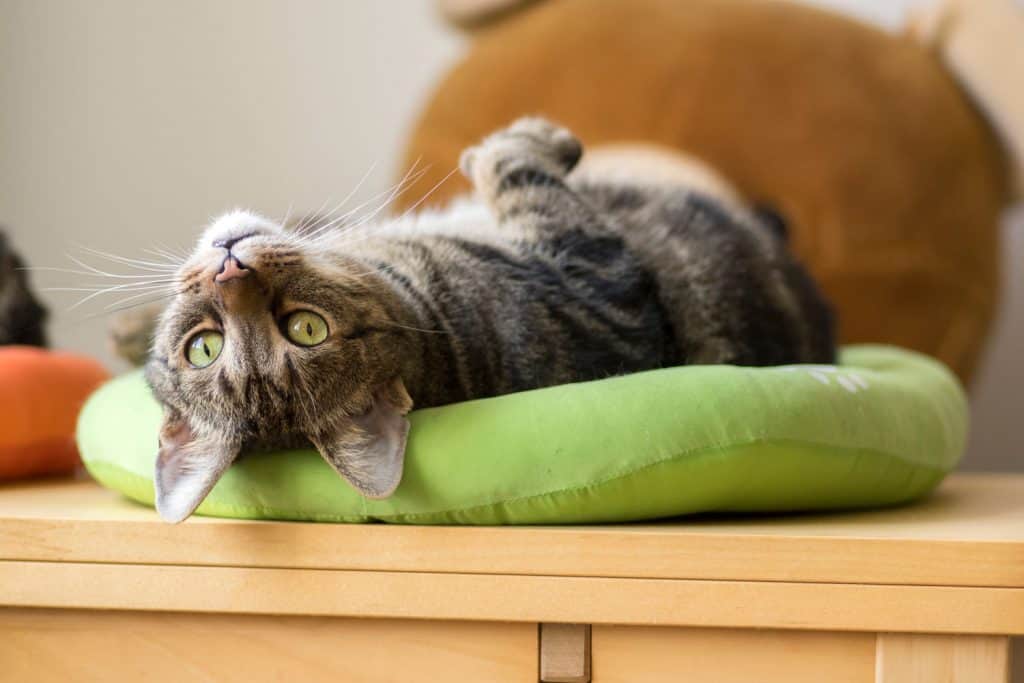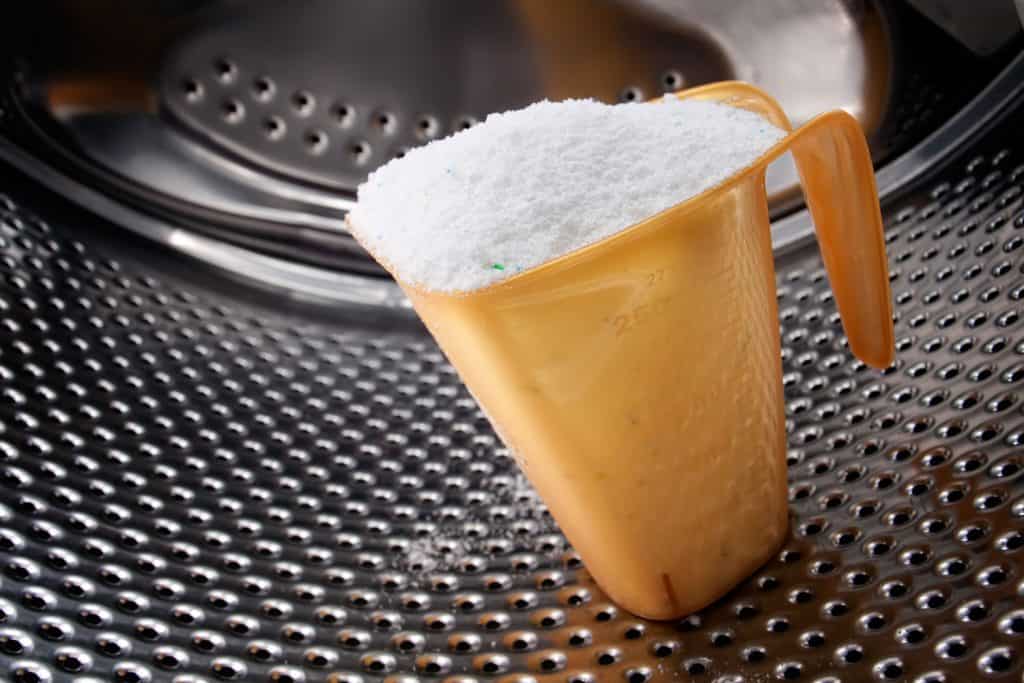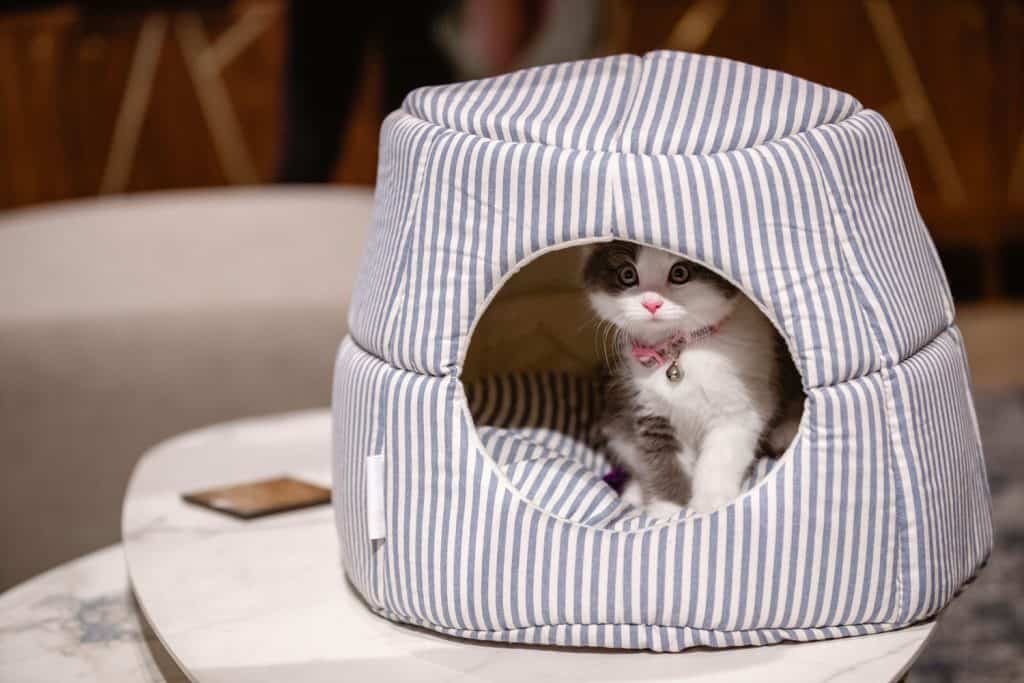As a pet parent, you want the best for your beloved precious companion, and that includes ensuring their bed is clean and cozy. But how exactly should you wash a cat bed?
In this complete guide, we'll provide you with expert tips and step-by-step instructions on how to properly wash your cat's bed, ensuring a fresh and comfortable resting place for your furry friend.
Let's dive in and discover the best practices for maintaining a clean and inviting cat bed.
Overview And Essential Considerations
You can wash a cat bed in a washing machine or simply use proper hand-washing techniques. But make sure to check the product’s label to determine if the bed is machine washable or not.
If the product is machine washable, the washing process generally includes these three major steps:
- Remove cat hair.
- Wash and dry the bedding.
- Wash and dry the mattress.
Putting a cat bed, however, in the washer without following the appropriate steps can lead to unsatisfactory results. Keep reading to learn the right way to wash a cat's bed.
We’ll also tackle other relevant topics such as how often to wash cat beds and how to know if a laundry detergent is safe for pets.

Steps To Wash A Cat Bed
Always check your manufacturer’s label on your cat bed to know the right way to clean the bed. Failure to follow the appropriate guidelines can lead to damaging or destroying the product.
Still, many cat beds follow general steps to achieve proper cleaning. Continue reading for the typical instructions to wash a cat bed.
1. Remove Cat Hair
Unless you’re a proud pet parent of a hairless cat breed such as a Bambino or Donskoy, your household feline will shed fur. Washing a cat bed that’s covered in hair can make the cleaning process more difficult.
Plus, if you’re going to put the bed in the washing machine, excessive cat fur can increase the risk of clogging and damaging the appliance.
Remove as much hair as possible from the pet bed and its bedding before throwing it into the washing machine or handwashing it. Use a lint roller, pet hair roller, and vacuum cleaner to remove as much hair from the bed as possible.
Check out the DELOMO pet hair remover roller on Amazon.
2. Wash And Dry The Bedding
If the pet bed has a cover, remove and wash it first before cleaning the rest of it. Use a pet-friendly stain and odor treatment solution before putting the bedding into the washing machine.
Put the appliance in the cold cycle, and make sure to use a pet-friendly detergent.
After the cold cycle completes, put the washing machine in the hot water cycle. This step will help remove fleas and their eggs that might be nesting on the bedding’s material.
Discourage additional flea growth by adding a cup of white vinegar to the cleaning solution. Then, put the bedding in the dryer and set the appliance to a low setting.
This part of the cat bed washing process can be easier than usual if your cats use their own bed.
If you want to find out more about whether cats should use or have their dedicated resting places, read through this post: Should Each Cat Have Their Own Bed?
Check out the Woolite Advanced pet stain & odor remover + sanitizer on Amazon.
3. Wash And Dry The Mattress
You should pre-soak the mattress if it’s soiled heavily from dirt, vomit, or pet excrement. Put the cat bed mattress into the washing machine and set it to a pre-soak cycle.
You can also use a pet-safe stain remover for this step to remove discolorations and spots.
After pre-soaking the mattress, set the washing machine to a cold water cycle. Use a pet-friendly fabric softener to enhance the plushness of the material and deliver extra comfort to your cat.
Additionally, some fabric softeners may help loosen pet hair on the mattress.
Pre-treat the mattress again if it still has stains after the washing cycle. Then, set the machine to another cold water cycle. Repeat these steps until the stains disappear.
Once cleaned properly, place the mattress on a drying rack. Another option is to let the product sit on a clean outdoor surface. Let the mattress air dry before letting your cat use it.
Check out the Bounce pet hair & lint guard fabric softener on Amazon.
Why Should You Wash A Cat Bed?
Washing a cat bed can help reduce and eliminate the growth of harmful bacteria and potential pest infestations.
Frequent cleaning can also help maintain your cat’s well-being and reduce the risks of certain health concerns for human household members.
How Often Should Cat Beds Be Washed?
In many cases, it’s best to wash a cat bed at least once every 1 or 2 weeks. More frequent washing might be a better option if your cat’s breed sheds more hair than average.
Additionally, it can be best to wash your kitty’s bed more often than usual if someone in the household is suffering from pet allergies.
Washing your feline’s bed frequently can also help remove catnip remnants if you’re using it to train your pet.
If you’re wondering if you should put catnip in your pet’s bed, look into this post: Should You Put Catnip In A Cat Bed?
Check out the ECOS hypoallergenic laundry detergent on Amazon.
What Can I Use To Wash My Cats Bedding?
Wash your cat’s bedding with a pet-friendly laundry detergent. Make sure that the cleaning solution is safe for your cats.
Read the product’s label before finalizing the purchase to ensure that it doesn’t contain harmful ingredients.
Check out the Biokleen kid and pet safe laundry detergent on Amazon.

What Is A Pet-Safe Laundry Detergent?
Laundry detergents that are devoid of fragrances and synthetic dyes are generally pet-safe or pet-friendly.
Avoid those with artificial ingredients that can remain on surfaces after washing cycles.
Accidental ingestion may lead to detergent poisoning, which might lead to symptoms like vomiting, lethargy, incessant drooling, and a lack of appetite.
Take a look at the LaundraPet pet detergent on Amazon.
How Do I Wash My Cat's Igloo Bed?

Igloo beds are a warm and cozy place for cats to lounge, allowing them to stay comfortable during cold weather. However, these pet beds can be challenging to clean because of the cavity.
Plus, some igloo beds don’t have removable bedding, which would otherwise make the cleaning process fairly easy.
Follow these steps to clean your cat’s igloo bed properly:
- Sprinkle baking soda on the bed’s surface.
- Let the baking soda sit for about an hour.
- Use a vacuum cleaner to remove the baking soda, which should accompany the loose dirt and foul smells on the bed.
- Apply your preferred fabric stain remover.
- Pull the bed inside out since the majority of pet hair tends to be trapped inside the cavity.
- Presoak the cushion to remove pests and harmful bacteria.
- If the igloo bed is machine washable, follow the washing instructions that are usually located on the product's tag.
- If the igloo bed isn’t machine washable, submerge the product in warm or hot water and let it soak for about 15 to 30 minutes.
- Squeeze the bed until water is no longer coming out of it.
- Hang or place the igloo bed on a drying rack to let it air dry.
Click here to take a look at the PETMAKER igloo pet bed on Amazon.
What Dissolves Pet Hair In The Washing Machine?
Mixing water and pet hair can result in thick clumps of fur, which can stick to other fabrics and the sides of the washing machine’s drum. It can then lead to clogging drain pumps.
Although the best way to wash fabrics in the washing machine is to remove pet hair first, some fur can remain. You'll need ½ cup of white vinegar and a clean cloth to loosen and remove pet hair from the appliance.
Vinegar is acidic, which may help in loosening some of the fur in the machine.
The chemical components of white vinegar aren't strong enough to completely dissolve pet hair. Still, it can do a reasonably good job of loosening the fur, making it easy to remove.
Here are the steps to do so:
- Add the ½ cup of white vinegar into the washing machine.
- Put the appliance in a rinse cycle.
- Run an empty wash cycle.
- Wipe the washing machine’s drum with a clean cloth to remove leftover hair.
Maintaining A Clean Cat Bed
Washing a cat bed generally has three major steps, which are to remove the pet hair, wash and dry the bedding, and launder and remove moisture from the mattress.
Generally, this task should take place at least once every 1 to 2 weeks. But pet parents may increase the washing frequency for cats that shed heavily.
![A grumpy looking Persian cat sleeping in his white cat bed, How To Wash A Cat Bed [A Complete Guide]](https://meowhoo.com/wp-content/uploads/2021/09/How-To-Wash-A-Cat-Bed-A-Complete-Guide-683x1024.png)
Some elements on this page may have been created by our team using advanced AI to provide you with top-notch cat inspired ideas. Read more about our AI Content Policy.







